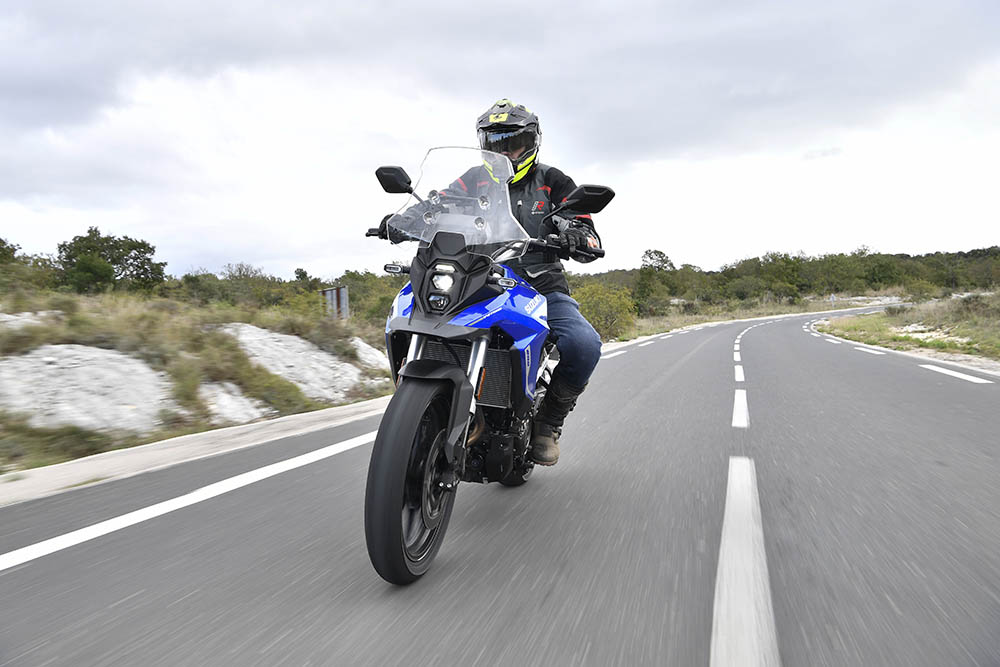Following the launch of Suzuki’s V-Strom 800DE earlier this year, the more road focused RE version is new for 2024. Though claimed to be suited to tackling some light off-road travel, the new model has been primarily modified in key areas to improve its road performance. It’s also £1000 cheaper and going up against machines like the Triumph Tiger Sport 660 and Yamaha Tracer 7 GT.
With over 6000 miles of experience on the current V-Strom 800DE (Dual Explorer) model, after running one as a long-term test bike this year, I’ve become very familiar with what is a super versatile motorbike, and during the press launch of the RE in the south of France, I got the chance to see just how they compare.
One of the key changes to the latest Suzuki is evident as soon as you sit on it, and being a bit short in the leg, the 30mm lower seat makes both getting on it, and subsequent feet down manoeuvres distinctly easier and more secure. Less clear are the subtle changes to the riding position, with the 15mm narrower tapered alloy bars now sitting 13mm lower and 23mm further forward. Together with the new alloy footrests, attached to the frame 7mm higher and 14mm further back, you’re now canted slighter more towards the front end. Given the minor nature of the differences, I’m happy to admit, I’d need to jump straight from a DE to an RE to tell exactly how much they alter the way you sit on the bike. Higher density foam in the seat is another thing I’d need more time to assess the comparative feel of.
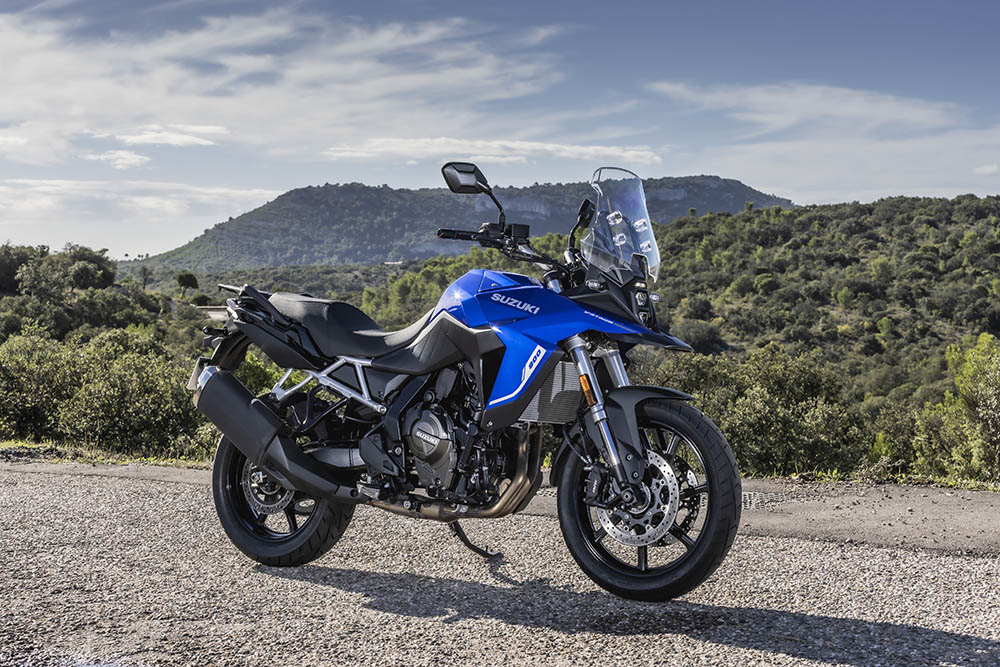
A more relevant and much more obvious alteration that can be detected from the very first corner is the way the RE steers. With its 19” front cast wheel giving sharper, more positive steering, less effort is required to get the 800 to turn. Better still, at speed on the more open roads, the feedback and accuracy of the front wheel lends itself to more confident cornering. My DE steers well enough, but the RE is distinctly superior in this area. Rounding some of the mountain road hairpins we repeatedly came across on the test route felt altogether more assured.
Also assisting greater faith at any speed, though particularly when you’re riding at a more spirited pace, are the RE’s new brakes. Now with four-piston radial calipers, there’s quite a bit more power and bite available. I’ve often thought the DE’s twin-piston sliding calipers do a remarkable job given their fairly basic spec, but the RE’s stoppers make them feel relatively weak. Combined with the improved steering, and the surprisingly decent Dunlop OE tyres, the new V-Strom can be happily ridden in a sporting fashion. I certainly wouldn’t have felt quite as comfortable riding a DE in the same way I did the RE at times.
The support offered by the front forks deserves some praise here too. Though they have less adjustability and significantly less travel than the DE’s, they still have a decent balance of comfort and control. Their chief limitation would no doubt be found riding off-road, where the DE’s extra 70mm of travel and ground clearance would let it progress more capably. And given they have a lot more adjustment, can be tailored more readily to suit riding on more uneven ground. On the road though, the RE’s set up was absolutely fine, even if the reduced ground clearance does make it easier to scrape the footrests.
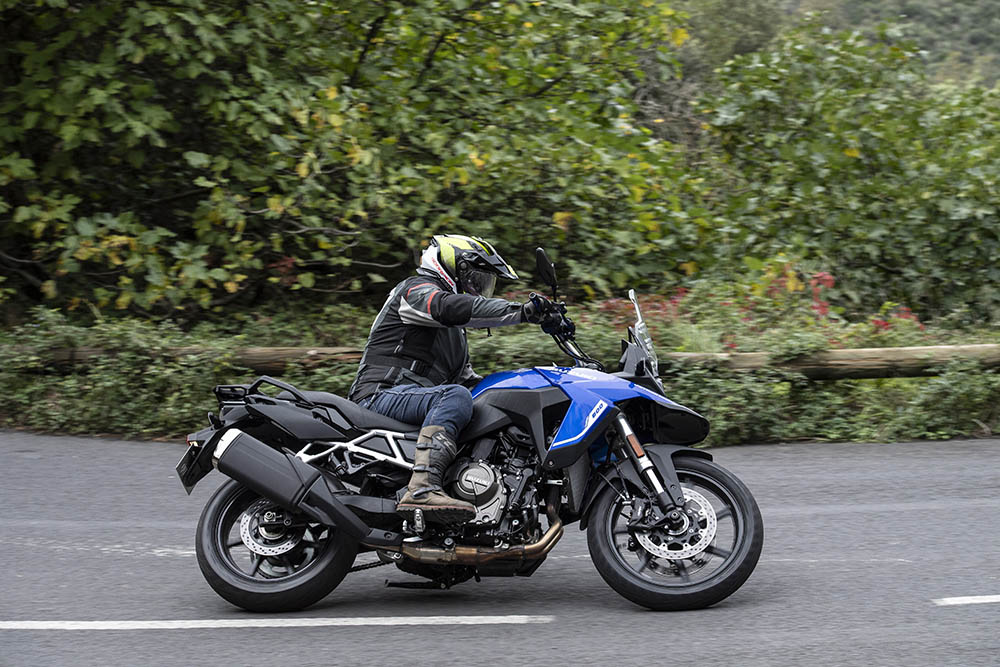
Other differences on the RE give it notable superiority for road riding, one of the more appreciable ones being the taller, wider, adjustable screen. The tiny piece of plastic bolted on to the DE can’t match the new bike’s level of protection, the RE’s screen making life far more comfortable, especially over a longer distance and greater speed. It can be mounted in three different positions, but you still need to get the tools out to change its height. The new screen can now match the long-distance comfort the rest of bike has. Ok, I didn’t ride it for more than an hour at a time, but I know from the multiple high-mile hikes I’ve done on my DE, the V-Strom is a damned good mile-muncher. Its unchanged 20-litre tank keeps you rolling along nicely too, with 200-250 miles possible between refills.
A very significant part of the bike, which thankfully hasn’t been altered at all, is the RE’s superb 776cc parallel twin engine. I rate this motor really highly, and though the very best praise seems to be reserved for the sort of big capacity, massively powerful stuff powering superbikes, let me tell you, I reckon this is one of the most impressive I tried. Ok, its excellence needs to be put in context, but for a middleweight twin making ‘just’ 84bhp, its pulling power is remarkable. The solid drive it delivers, no matter what gear you’re in, or how much its revving, really is something. Ultimately it might not have the sheer strength of something like the legendary GSX-R1000 K5’s motor, but it certainly shares a similar level of flexibility and reliance to deliver the goods without working too much to get it. The motor’s 270° crankshaft’s firing order helps it mimic the sort of punchy delivery of a V-twin which only adds to the immediacy and potency of its throttle response. I absolutely love it. Twin balancer shafts don’t completely eradicate vibes but, though you occasionally notice them, I’ve never felt them obtrusive to any degree. It’s frugal too, and if you’re gentle with it, getting 60-70mpg is easy enough. There are three different power modes to choose from, and though they alter the keenness of throttle response quite noticeably, the engine reaches the same peak power in all three settings. The RE now has three levels of traction control, doing away with the Gravel mode of the DE. Also gone is the ability to switch off the rear ABS featured on that model, the RE version of the bike just having two options of sensitivity. Any adjustment can be made really quickly and simply via the bar-mounted bar switches.
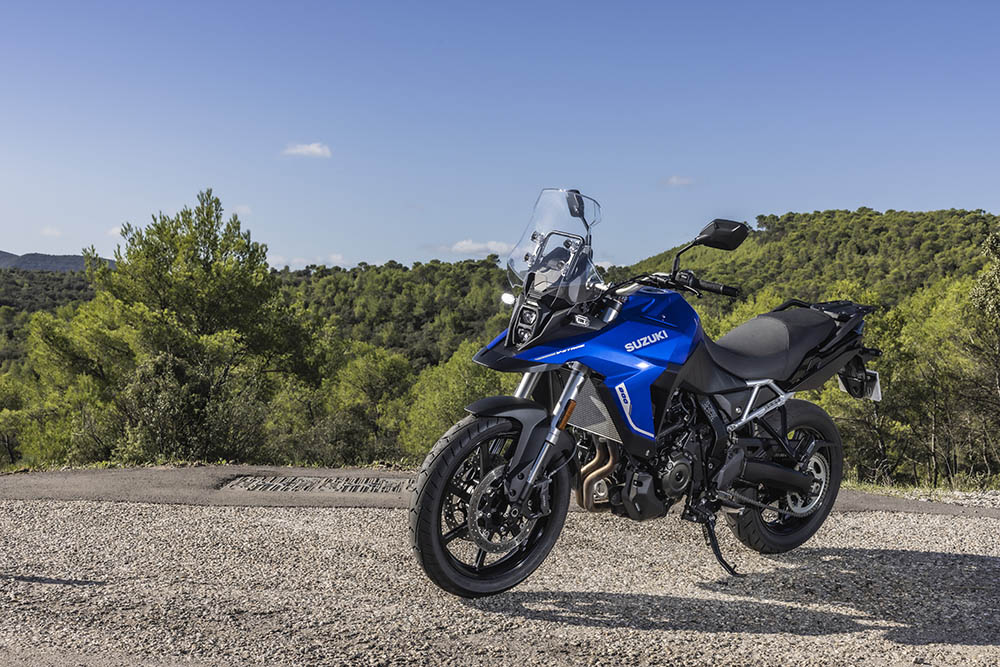
Bar the changes to the suspension, front wheel size, riding position, and 55mm shorter wheelbase, the V-Strom’s chassis is basically the same as the DE’s. Its steel-tubed frame, with useful bolt-on subframe might not sound too light or hi-tech, but it helps the Suzuki to handle well and provide full stability. Even when you’re getting more of a serious move on, the 800 always feels easy to ride and entirely trustworthy.
One change I personally welcome on the new bike is the move to tubeless tyres. I recently had a puncture on my tubed-wheeled DE, and it took me way longer to sort than it would have to just plug a hole in a tubeless tyre. I missed the DE’s handguards though, the RE version not featuring either those or its sump and radiator guards. The USB port conveniently placed next to the unchanged 5” colour TFT dash, is an appreciated retention. An omission that is regretful though (on both DE and RE models), is cruise control. Suzuki staff said the importance to retain a competitive price ruled that out, but hinted if demand was high enough it might consider fitting it in future.
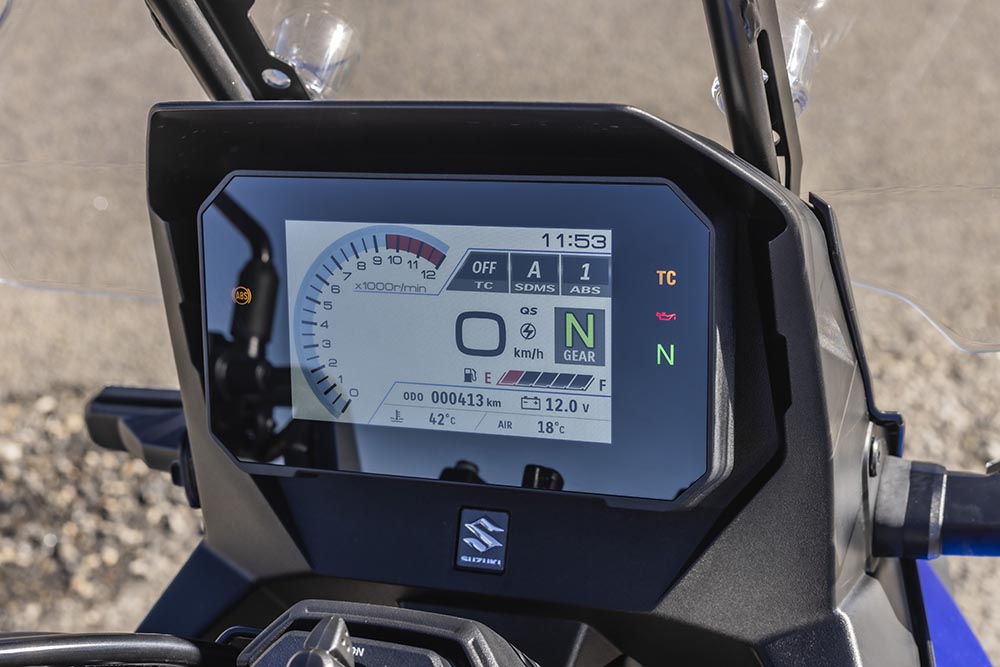
The new V-Strom 800RE is still a very good bike without it though. I thoroughly enjoyed my day on it, though the contentment was tainted a little by the fact I think it’s more suitable for me than my DE. I really benefitted from the lower seat and bigger screen, but what I thought was the biggest advantage of the RE is its steering. It gives the bike a distinctly sportier and more secure feel overall. All in all, I think the RE is a better bike than the DE for most of the people, most of the time. I think it’ll suit me more, and I’m hoping to get one next year.
The new bike comes in the blue we tested, as well as black and matt green and will be in the dealers from early November.
2024 Suzuki V-Strom 800RE specification
Price: £9,665
Engine: 776cc, parallel-twin
Power: 84bhp/62kW @ 8500rpm
Torque: 78Nm/58lb.ft @ 6800rpm
Transmission: Six-speed, chain final drive
Frame: Steel-tubed frame
Suspension: Preload adjustable 43mm Showa big piston inverted telescopic fork. Showa link-type, mono-shock, adjustable preload and rebound damping
Brakes: Radially-mounted, four-piston front brake calipers and 310mm floating discs. Single-piston, pin-slide rear caliper and a 260mm disc.
Wheels: 19” front, 17” rear, cast alloy
Tyres: Front 110/80-19 tubeless. Rear 150/70-17 tubeless.
Wheelbase: 1,515mm
Ground clearance: 185mm
Seat height: 825mm
Kerb weight: 223kg
Fuel capacity: 20 litres
Contact: bikes.suzuki.co.uk


